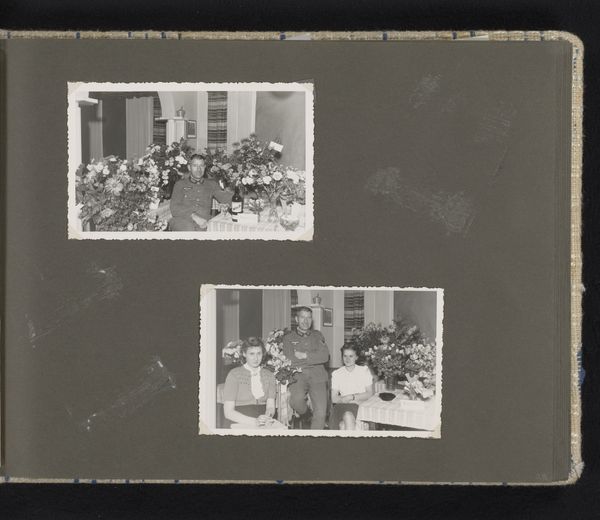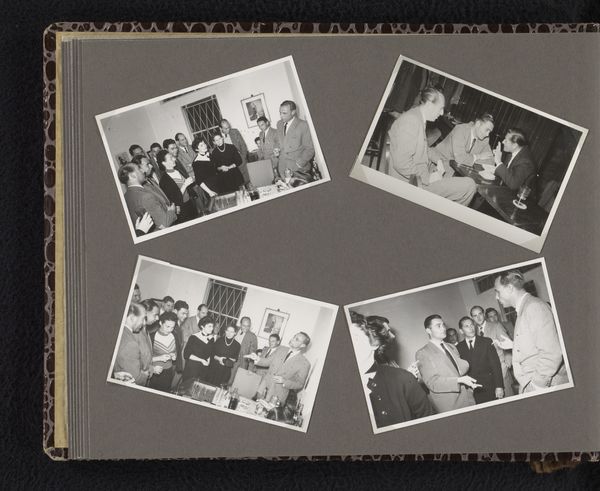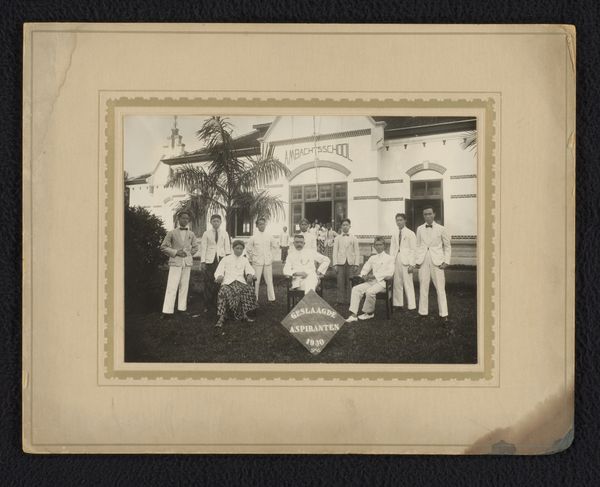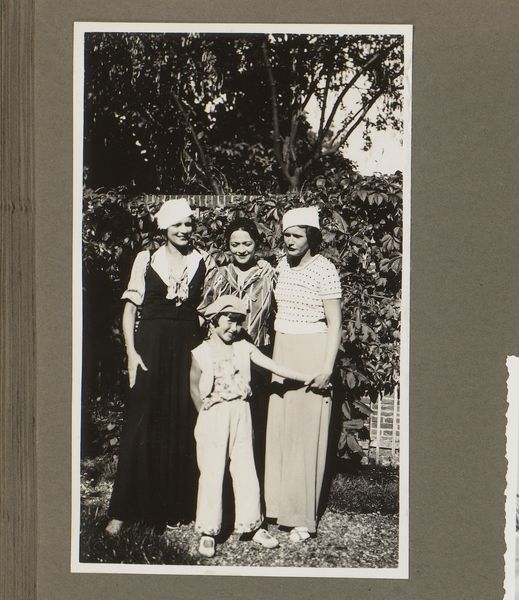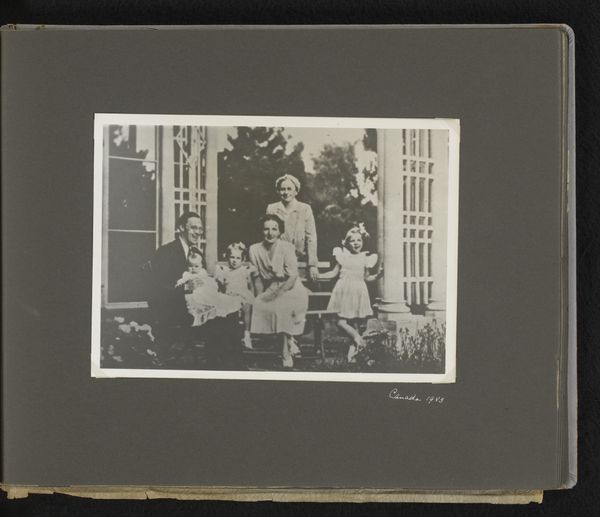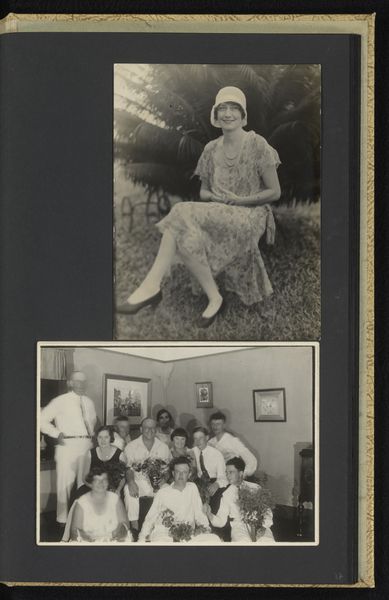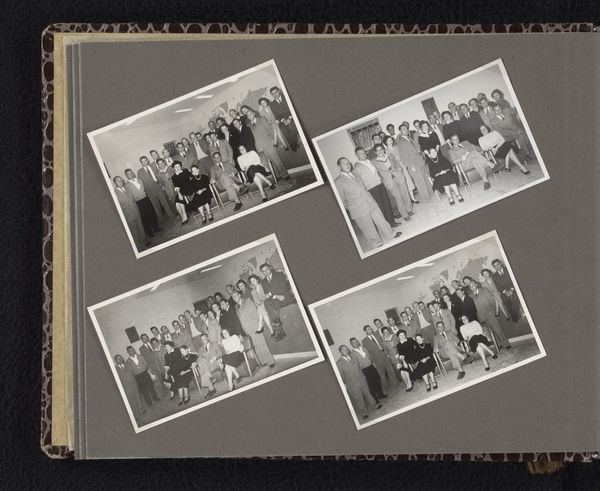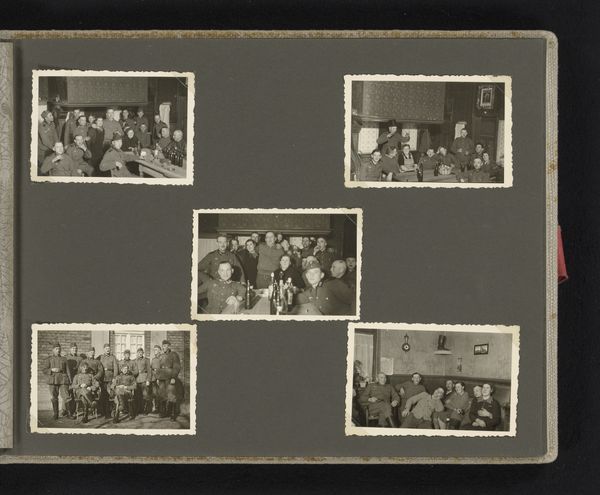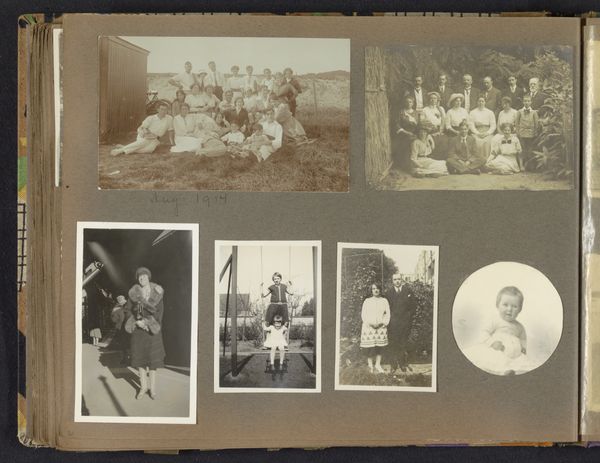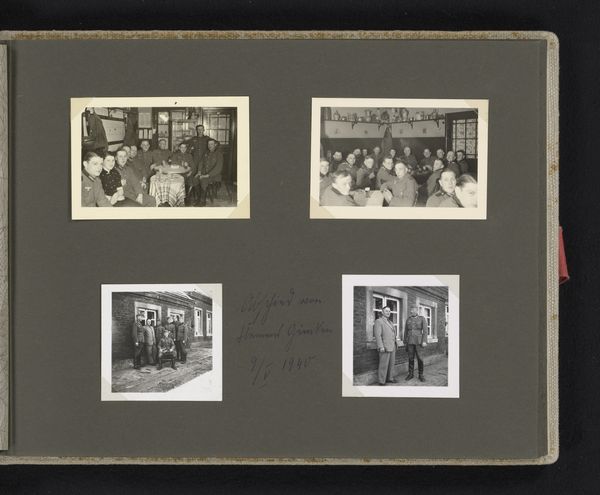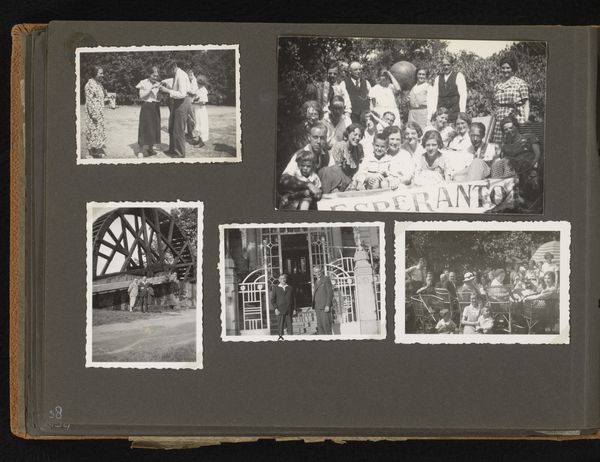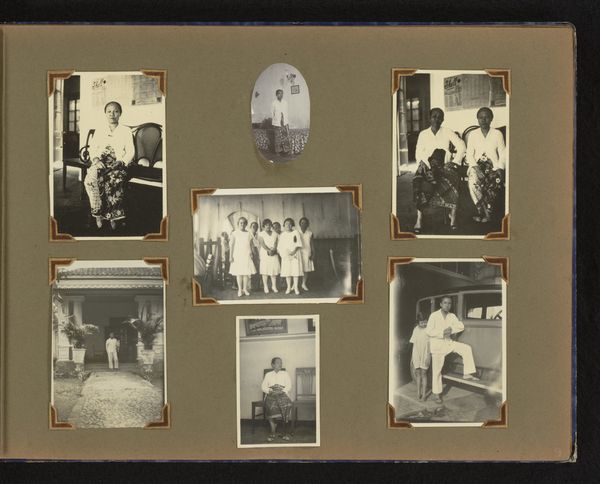
photography, gelatin-silver-print
#
portrait
#
photography
#
gelatin-silver-print
#
genre-painting
#
modernism
Dimensions: height 65 mm, width 90 mm
Copyright: Rijks Museum: Open Domain
Editor: We're looking at a photograph titled "Isabel Wachenheimer tijdens carnaval, in maart 1935," taken in 1935. It's a gelatin silver print and depicts a group of children in costume. What strikes me is the contrast between the playful costumes and the almost somber expressions of the children. How do you interpret this work? Curator: Considering the year, 1935, it's difficult to view this photograph outside the darkening socio-political climate in Europe. While ostensibly a genre painting of children enjoying carnival, photography like this can tell us about cultural expressions but also the precarity of childhood. Are these costumes a form of escapism? A tradition being upheld despite growing anxieties? Who was Wachenheimer, and what became of these children in the years following? Editor: That's a perspective I hadn’t considered. The innocence of childhood versus the impending doom really brings a new weight to it. Curator: Exactly. Also, think about how photography itself functions as a form of documentation and control during this period. Official and amateur photography increasingly served different and sometimes competing interests. Were photographs like these exhibited publicly, or primarily for private consumption within family albums? Knowing the image’s context helps us understand the public role of photography. Editor: It makes you wonder about the photographer's intentions and whether they were trying to capture a fleeting moment of normalcy. I'm curious about how these kinds of personal photographs get preserved and find their way into museum collections. Curator: Indeed. That speaks volumes about how historical narratives are constructed and the value we assign to the everyday lives of ordinary people within those narratives. Editor: Thank you, that's given me a lot to think about regarding the politics of imagery in this period.
Comments
No comments
Be the first to comment and join the conversation on the ultimate creative platform.
